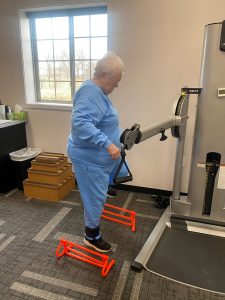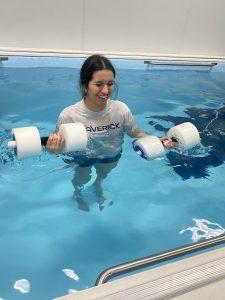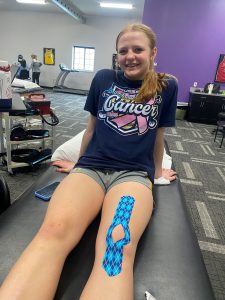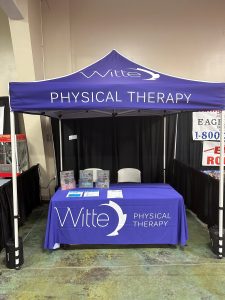Stay Steady: Tips for Fall Prevention Month
September 30, 2025
September is Fall Prevention Month.
Every year, 1 in 4 people over age 65 experiences a fall, and unfortunately, 1 in 5 of those falls results in serious injuries like broken bones or head trauma. While falls are common in older adults, they’re not an inevitable part of aging. Research shows there are proven ways to reduce your fall risk through simple changes and targeted exercises.

Lower Body Strength is Critical
Your legs are your foundation for stability. As we age, we naturally lose muscle mass each year without resistance training. This lower body weakness directly increases your fall risk, making strengthening exercises essential for fall prevention.
Effective Lower Body Strengthening Activities:
- Walking regularly
- Water exercise (gentle on joints while building strength)
- Weight lifting or resistance band exercises
- Body weight exercises like squats and lunges
- Stair climbing
Your physical therapist can design a safe, personalized strengthening program that targets the specific muscles you need for better stability and balance.
Balance Training: Use It or Lose It
Balance is like any other skill – it requires practice to maintain and improve. Challenging your balance with simple exercises can make a real difference in preventing falls.
Simple Balance Exercises to Try
Start with these basic exercises, using a sturdy chair or counter for support if needed:
- Single-leg stands: Hold for 10-30 seconds on each foot
- Eyes-closed standing: Stand with feet together, eyes closed for 10-15 seconds
- Chair rises: Get up from a chair without using your hands
- Heel-to-toe walking: Walk in a straight line, placing one foot directly in front of the other
Important: Always have something sturdy nearby to grab if you feel unsteady, and stop if you feel dizzy or uncomfortable.
Creating a Safer Home Environment
Many falls happen at home, but small, simple environmental changes can make a huge difference in your safety.
- Use night lights to improve visibility in hallways and bathrooms
- Remove loose rugs or clutter that could trip you
- Secure cords and cables out of walking paths
- Install grab bars in bathrooms near the toilet and shower
- Keep commonly used items within easy reach to avoid risky climbing
Don’t Forget About Vision & Medications
Your eyes and your medications play a big role in balance too. Don’t ignore these important components.
- Have your vision checked regularly – poor eyesight can cause you to miss tripping hazards.
- Talk with your doctor or pharmacist about your medications, especially if you feel dizzy, drowsy, or unsteady.
When to See a Physical Therapist
If you’ve noticed more unsteadiness, or if you’ve had a fall in the past, a physical therapist can help. A PT can:
- Assess your balance and strength
- Create a personalized exercise program
- Teach you strategies to stay safe and confident
- Work with your doctor or pharmacist on vision or medication concerns
Bottom Line
Falls are common, but they don’t have to be part of aging. By strengthening your legs, practicing balance, and making your home safer, you can reduce your risk and stay active.
This Fall Prevention Month, take one small step toward better balance – you’ll be glad you did.
References
1) Exercise for falls and fracture prevention in long term care facilities: a systematic review and meta-analysis. J Am Med Dir Assoc. 2013;14(9):685-689.e2.
2) Preventing Falls in Older Persons. Am Fam Physician. 2017 Aug 15;96(4):240-247. PMID: 28925664.
3) The Effectiveness of Physical Therapist–Administered Group-Based Exercise on Fall Prevention: A Systematic Review of Randomized Controlled Trials. Journal of Geriatric Physical Therapy 36(4):p 182-193, October/December 2013.
4) Exergame technology and interactive interventions for elderly fall prevention: A systematic literature review
Articles/Content:
1) Physical Therapy Guide to Falls
2) Fall Prevention Starts with a Conversation
3) Balance and Falls








